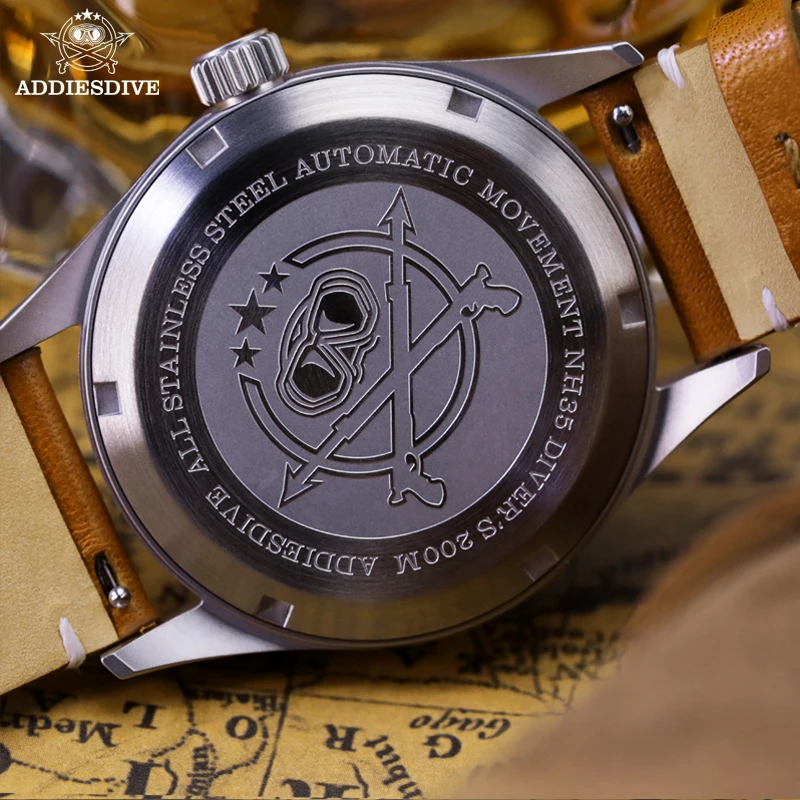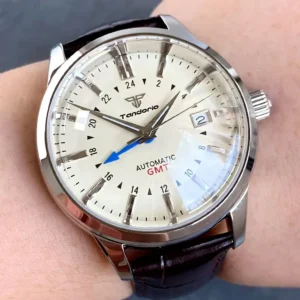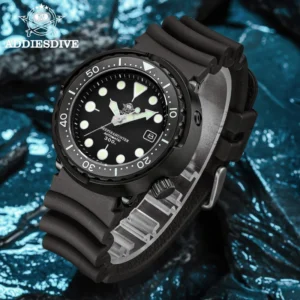Introduction: From Water-Resistant Timepieces to Modern Underwater Tools
A true dive watch is far more than just a water-resistant timepiece. These specialized instruments represent the perfect marriage of form and function, designed to withstand the unique challenges of underwater exploration while providing critical information to divers. What began as simple attempts to keep water out of watch cases has evolved into sophisticated instruments that can withstand extreme pressures, provide luminosity in the darkest depths, and offer reliability when lives depend on it.
The evolution of dive watches mirrors the history of underwater exploration itself. As humans ventured deeper beneath the waves, watchmakers responded with technical innovations that pushed the boundaries of what was possible. This fascinating interplay between diving demands and horological innovation has driven the development of features we now take for granted.
Throughout this technical journey, we’ll explore how dive watches transformed from basic waterproof designs into the sophisticated instruments we know today. The history of dive watch engineering reveals a constant pursuit of improved performance, reliability, and safety. Modern automatic dive watches represent the culmination of decades of refinement, combining heritage design elements with cutting-edge materials and technology.
Waterproof Foundations: Pioneering Case Designs (1920s-1940s)
The earliest challenge in creating watches suitable for underwater use was fundamental: keeping water out. Before dedicated dive watches existed, watchmakers struggled with the basic problem of water intrusion through vulnerable points in the case, particularly around the crown and crystal.
The revolutionary Rolex Oyster case system introduced in 1926 marked a watershed moment in water-resistant design. This ingenious system featured a screw-down crown that created a hermetic seal, much like a submarine hatch. The system used threaded components that, when tightened, compressed gaskets to prevent water entry. This basic principle remains fundamental to dive watch design even today, though materials and engineering have vastly improved.
Omega made its own breakthrough with the Omega Marine in 1932, which utilized an innovative double-case construction. The watch itself sat within an outer protective shell, creating an additional barrier against water intrusion. Meanwhile, Panerai developed specialized designs for Italian military divers, with cushion-shaped cases and wire lugs that accommodated the bulky diving suits of the era.
Material limitations significantly impacted the performance of these early water-resistant watches. Early gaskets were made from lead, cork, or primitive rubber compounds that degraded quickly, limiting long-term water resistance. Similarly, the luminous materials of the era—radium and later Radiomir—provided crucial visibility but posed serious health risks due to their radioactivity, a problem that wouldn’t be solved for decades.
These pioneering designs laid the groundwork upon which all future dive watches would be built, solving the fundamental challenge of water resistance. The timeline of diving watch innovations shows how these early solutions established principles that would evolve but never be abandoned.
The Birth of the Modern Dive Watch: The 1953 Trifecta
The early 1950s witnessed the popularization of SCUBA (Self-Contained Underwater Breathing Apparatus) diving, creating an entirely new set of requirements for underwater timekeeping. The year 1953 stands as perhaps the most important in dive watch history, with three groundbreaking models establishing the template for what a modern dive watch should be.
The Blancpain Fifty Fathoms introduced several innovations that would become industry standards. Its unidirectional rotating bezel allowed divers to track elapsed time safely—the bezel could only turn counterclockwise, meaning any accidental bumps would show more time elapsed rather than less, a critical safety feature. The watch also featured exceptional water resistance for its era and incorporated antimagnetic properties to ensure accuracy around diving equipment.
The Rolex Submariner, also debuting in 1953, built upon the established Oyster technology with improvements specifically for diving use. Its reinforced case construction and enhanced crown sealing system allowed for greater depth ratings, while its highly legible dial design with contrasting hands and markers set a standard for underwater visibility that remains influential today.
The often overlooked Zodiac Sea Wolf completed this trio of 1953 innovations with practical engineering approaches that made professional-grade dive watches more accessible. Its robust construction and clever technical solutions demonstrated that dive watch technology could be both effective and relatively affordable.
The unidirectional rotating bezel, now standard on virtually all dive watches, represented a crucial safety innovation. By tracking elapsed time underwater, it helped divers manage their air supply and decompression stops. The technical specifications of these watches—typically 100m water resistance, luminous dials, and secure bracelets—established the blueprint for dive watches for decades to follow.
These pioneering models created the technical foundation that would define dive watches for generations. Their influence on the evolution of professional diving watches cannot be overstated, as they established both the aesthetic and functional elements we still associate with dive watches today.
Deeper and Longer: Technical Advancements of the 1960s-1970s
The 1960s and 1970s saw dive watch technology advance dramatically as both recreational and professional diving pushed into new frontiers. As divers ventured deeper, watchmakers responded with technical solutions to entirely new problems.
The race for increased depth ratings wasn’t merely for marketing purposes—it reflected the genuine need for watches that could withstand the crushing pressures of deep-sea diving. Case engineering became more sophisticated, with thicker crystals, reinforced case backs, and improved gasket systems enabling watches to withstand pressures at depths of 300m, 600m, and beyond.
Perhaps the most significant technical innovation of this era was the helium escape valve, which solved a problem most people never encounter. During saturation diving, where divers live in pressurized chambers for days or weeks, helium molecules (used in breathing gas mixtures) would slowly penetrate watch cases. During decompression, these trapped molecules could cause the crystal to pop off violently. The helium escape valve provided a one-way exit path for these molecules, allowing pressure to equalize safely.
Seiko approached professional dive watch engineering from a different perspective, introducing monobloc case constructions that eliminated the need for a separate case back—and thus one potential point of water entry. Their L-type gaskets improved sealing efficiency, while their robust automatic movements proved exceptionally reliable in demanding conditions.
Doxa introduced a range of practical diving tools, including watches with decompression tables built into the bezel and enhanced legibility through contrasting dial colors—often orange—that proved more visible at depth than traditional black or white dials.
Material science saw significant breakthroughs during this period as well. Titanium made its debut in dive watch cases, offering comparable strength to steel at roughly half the weight, along with superior corrosion resistance in saltwater environments. These innovations dramatically improved both the performance and wearing comfort of professional-spec dive watches.
This era demonstrated how the specialized needs of professional divers could drive watchmaking innovation, resulting in increasingly sophisticated timepieces designed for extreme conditions.
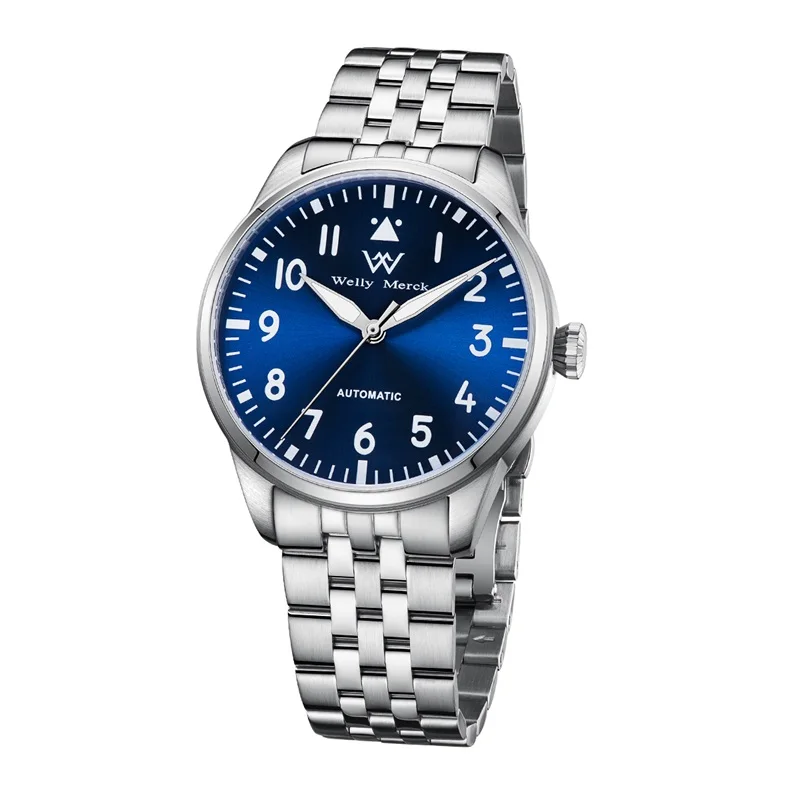
The Quartz Revolution and Technical Standardization (1980s-1990s)
The 1980s and 1990s brought transformative changes to dive watch technology, beginning with the widespread adoption of quartz movements. While purists debated the merits of this new technology, its practical advantages for diving were undeniable: superior accuracy, enhanced shock resistance, and often lower costs made quartz dive watches accessible tools for a broader range of underwater enthusiasts.
This period also saw the formalization of dive watch requirements through the ISO 6425 standard, which established specific technical criteria for timepieces labeled as “diver’s watches.” These requirements included:
- Water resistance of at least 100 meters (328 feet)
- Time-preselection capability (typically via a rotating bezel)
- Visibility at 25cm (9.8 inches) in total darkness
- Magnetic resistance
- Shock resistance
- Chemical resistance to saltwater
- A secure strap/bracelet system
The standardization brought clarity to the market and ensured that watches labeled for diving purposes actually met minimum performance requirements for underwater use.
As digital technology advanced, the first dive computers began to appear, offering detailed decompression information and depth readings that no mechanical watch could provide. While many predicted the obsolescence of traditional dive watches, they adapted by focusing on reliability as backup instruments and enhancing their durability.
Material innovations continued to improve performance, with sapphire crystals becoming more common, replacing mineral glass and acrylic. Sapphire offered superior scratch resistance, clarity, and pressure handling. Early ceramic components also began appearing in bezels, offering extreme hardness and scratch resistance compared to traditional aluminum inserts.
Sealing systems saw significant improvements, with advanced synthetic rubber compounds replacing older materials and crown protection designs evolving to provide additional security against accidental manipulation underwater. The evolution of dive watch technology during this period balanced tradition with innovation, maintaining the core principles of dive watches while incorporating new materials and standards.
Material Science Revolution: Modern Dive Watch Engineering (2000s-Present)
The modern era of dive watch engineering has been defined by a revolution in materials science, dramatically enhancing performance, durability, and aesthetics. These advancements have transformed every component of the dive watch while maintaining the essential design language established decades earlier.
Ceramic bezel technology represents one of the most visible advancements. Unlike traditional aluminum inserts that scratch and fade over time, ceramic bezels offer extreme hardness (often exceeding 1200 on the Vickers scale) and virtually permanent color stability. The manufacturing process involves compressing zirconium oxide powder, then firing it at temperatures exceeding 1500°C to create a material nearly as hard as diamond. The result is a bezel that maintains its appearance after years of use in harsh environments.
Titanium alloys have evolved significantly beyond their initial applications. Modern Grade 5 titanium (containing 6% aluminum and 4% vanadium) offers approximately twice the strength of the Grade 2 titanium used in earlier watches, enabling thinner, lighter case designs without sacrificing pressure resistance. These advanced titanium automatic watches provide exceptional comfort during extended wear, particularly important for professional divers.
Carbon composites have emerged as cutting-edge case materials, formed by layering carbon fiber with polymers under extreme pressure. The resulting material offers exceptional lightness, strength, and unique visual aesthetics with distinctive marbled patterns. These materials provide excellent shock absorption characteristics while remaining completely corrosion-proof.
Modern luminous technology has advanced dramatically from the radioactive materials of earlier eras. Super-LumiNova and similar photoluminescent compounds offer intense brightness and significantly longer duration—up to 8 hours of visibility—without the health hazards of radium or tritium. Advanced formulations provide different color options, with blue-emitting compounds offering superior visibility underwater.
Crystal clarity has improved through multi-layer anti-reflective coatings that virtually eliminate glare, enhancing legibility in challenging underwater conditions. These coatings, often applied to both sides of sapphire crystals, improve light transmission by over 99%, making dials instantly readable from any angle.
Silicon components in movements have improved performance through their antimagnetic properties, reduced friction (requiring less lubrication), and lighter weight, which enhances shock resistance and power reserve duration.
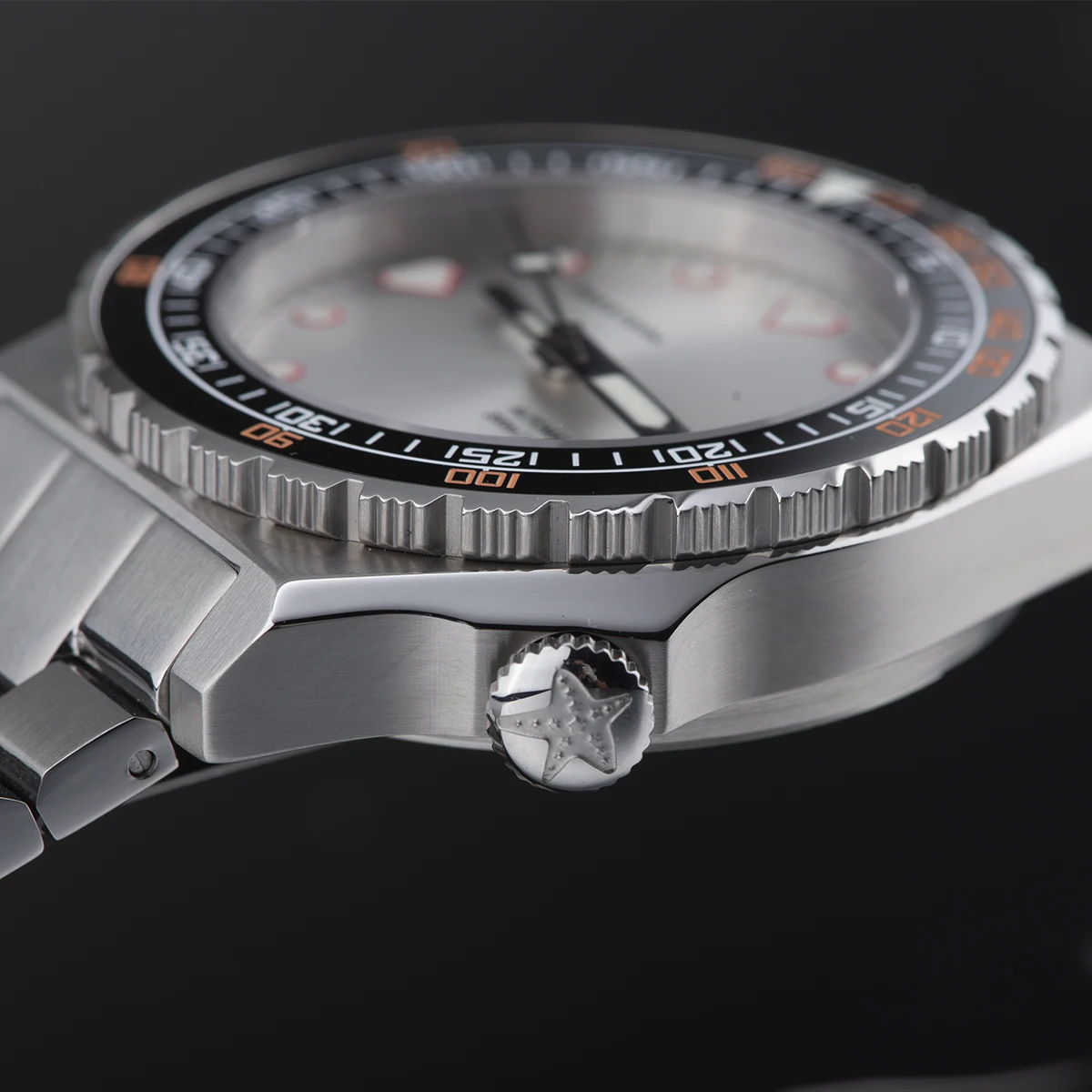
Engineering the Abyss: Ultra-Deep Dive Watches
Creating watches capable of functioning at extreme depths—beyond 1000 meters (3,280 feet)—presents engineering challenges that push the boundaries of what’s physically possible. At these depths, ordinary watch cases would implode under pressure exceeding 100 bar (1450 psi).
Case construction techniques for ultra-deep watches employ several specialized approaches. Many utilize a monobloc construction, machining the case from a single block of metal to eliminate potential failure points. Others employ dramatically increased case thickness, reinforcement rings, or even flexible case components that actually compress under pressure, creating tighter seals as depth increases.
Crystal thickness calculations become critical at extreme depths. While standard dive watches might use sapphire crystals 2-3mm thick, ultra-deep models often require crystals 5-7mm thick or more. The shape matters as much as thickness—domed or conical “top hat” designs distribute pressure more effectively than flat crystals. Some manufacturers employ unique solutions like Liquidmetal bonding to secure crystals or multiple gasket systems for redundant protection.
Testing procedures for these watches are as extreme as the depths they’re designed for. Beyond standard water resistance tests, manufacturers use hydraulic pressure chambers that can simulate depths far exceeding what any human diver could survive. Some models undergo testing at pressures equivalent to 15,000 meters (49,200 feet) or more, ensuring a massive safety margin.
Notable achievements in this specialized field include watches that have traveled to the deepest point on Earth—the Challenger Deep in the Mariana Trench—strapped to submersible vessels. These watches withstood pressures exceeding 1,100 bar (16,000 psi), proving the remarkable capabilities of modern watch engineering.
The engineering behind adventure watch cases demonstrates that innovation continues even beyond practical human diving depths, with manufacturers applying knowledge gained from these extreme designs to improve the durability and reliability of standard production models.
The Evolution of Movement Technology in Dive Watches
The beating heart of any dive watch—its movement—has undergone its own technical evolution, with each advancement improving reliability, accuracy, and functionality underwater.
Early dive watches typically housed manual-wind movements, which presented obvious limitations for extended diving operations. The need to unscrew the crown regularly to wind the watch created additional opportunities for water intrusion, while forgotten winding could result in a stopped watch during a critical dive.
Automatic movements represented a significant advancement for underwater timekeeping, offering several key advantages. Their self-winding mechanism eliminated the need for regular crown manipulation, maintaining power through the wearer’s natural motion. Higher jewel counts and robust construction provided better shock protection, while waterproof lubricants improved performance in varying temperatures.
The quartz revolution of the 1970s dramatically improved timekeeping accuracy from several minutes per day to mere seconds, a critical factor when timing decompression stops. Battery-powered movements also eliminated concerns about maintaining adequate winding tension during extended periods of inactivity.
Modern mechanical movements incorporate numerous technical innovations that enhance performance underwater. Silicon components offer complete antimagnetic properties, protecting accuracy around diving equipment. Extended power reserves—now frequently exceeding 70 hours compared to the standard 40 hours of earlier decades—ensure reliability during multi-day diving expeditions.
Advanced chronometer certifications provide additional assurance of accuracy under various conditions. While COSC certification tests movements in five positions and three temperatures to ensure accuracy within -4/+6 seconds per day, the more rigorous METAS certification tests fully assembled watches under magnetic fields and varying conditions, guaranteeing performance within 0/+5 seconds daily.
These advancements have made the movements in bronze automatic watches and other modern dive timepieces more reliable and accurate than ever before, maintaining the traditional appeal of mechanical movements while offering performance that approaches electronic precision.

Automatic Chronograph Watches, Classic Style Dive Watches
$3,053.06 Select options This product has multiple variants. The options may be chosen on the product pageBronze Automatic Watches, Military Inspired Automatic Watches, Professional Spec Dive Watches
Price range: $1,442.21 through $1,442.82 Select options This product has multiple variants. The options may be chosen on the product pageProfessional Spec Dive Watches, Titanium Automatic Watches
$574.74 Select options This product has multiple variants. The options may be chosen on the product pageClassic Automatic Dress Watches, GMT Automatic Watches, GMT Dive Watches
Price range: $468.93 through $552.94 Select options This product has multiple variants. The options may be chosen on the product pageDay Date Automatic Watches, Professional Spec Dive Watches
Price range: $751.60 through $790.26 Select options This product has multiple variants. The options may be chosen on the product pageClassic Automatic Dress Watches, Classic Style Dive Watches
Price range: $742.56 through $1,099.56 Select options This product has multiple variants. The options may be chosen on the product page
Dive Watches Today: Between Heritage and Innovation
In an age dominated by digital dive computers, mechanical dive watches occupy a fascinating position between heritage instrument and technical innovation. While dive computers have undoubtedly become the primary underwater timing tool, traditional dive watches maintain their relevance as reliable backup instruments that function without batteries or electronics that can fail.
Modern dive watch design balances respect for heritage elements with technical innovation. The classic aesthetic established in the 1950s—contrasting dials, bold indices, and distinctive hands—remains largely unchanged, even as the materials and engineering behind these elements have been revolutionized. This connection to horological history provides a sense of continuity that many enthusiasts appreciate.
Manufacturing techniques have dramatically improved the precision and quality available at various price points. Computer-aided design, CNC machining, and advanced quality control processes ensure consistent performance across production runs, while enabling complex case designs that would have been impossible to produce economically in earlier decades.
Looking forward, dive watch technology continues to evolve through smart materials that respond to environmental conditions, sustainability initiatives that reduce environmental impact, and hybrid technologies that bridge the gap between traditional watchmaking and digital functionality.
The enduring appeal of mechanical dive watches speaks to their exceptional engineering and the human appreciation for precision instruments. The milestones in underwater watch engineering tell a story of problem-solving and innovation that continues today. Modern specialized designs like GMT dive watches demonstrate how traditional dive watch architecture can accommodate additional functionality while maintaining core performance characteristics.
Technical Comparison: Key Components Across Time
The technical evolution of dive watches becomes clearest when examining how individual components have transformed over the decades:
| Component | Early Era (1950s-60s) | Middle Era (1970s-90s) | Modern Era (2000s-Present) |
|---|---|---|---|
| Case Materials | Primarily stainless steel | Stainless steel, early titanium | Steel, titanium alloys, bronze, ceramic, carbon composites |
| Case Construction | Separate case back with gasket | Improved gasket designs, reinforced case backs | Monobloc construction, helium escape valves, improved crown tubes |
| Water Resistance | Typically 100-200m | 200-600m becoming standard | 300m standard, 1000m+ for specialized models |
| Crown System | Basic screw-down design | Protected crowns, improved thread design | Triple-lock systems, crown guards, advanced gaskets |
| Crystal | Acrylic or mineral glass | Early sapphire adoption | Sapphire with AR coating, increased thickness |
| Bezel Mechanism | Basic ratcheting systems | Improved click mechanisms, better water sealing | Ceramic ball systems, smoother operation, zero backplay |
| Bezel Materials | Bakelite, aluminum | Improved aluminum, early ceramic | Ceramic, sapphire, liquidmetal |
| Luminous Technology | Radioactive radium, tritium | Transitional tritium, early phosphorescent | Super-LumiNova, Chromalight, multi-layer application |
| Movement Durability | Basic shock protection | Improved antimagnetic properties | Silicon components, enhanced shock absorption |
| Movement Accuracy | +/- 5-10 seconds daily | +/- 2-5 seconds daily | COSC/METAS certification, +/- 0-5 seconds daily |
This technical progression reveals how each component has been refined over time, with improvements in materials, manufacturing, and engineering continuously enhancing performance. The dive watch heritage and evolution shows both remarkable consistency in core principles and significant advancement in execution.
The technical journey of dive watches represents one of the most fascinating examples of how form follows function in product design. From their origins as specialized tools for military and professional divers to their current status as versatile timepieces, dive watches demonstrate how practical needs drive innovation, resulting in products that balance tradition and technology in perfect harmony.

